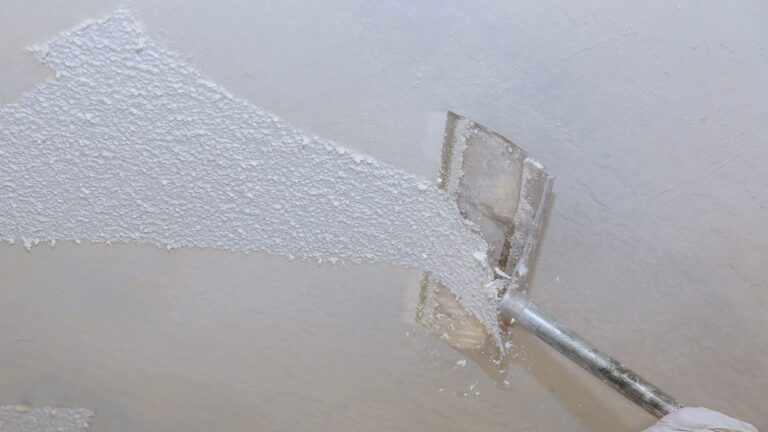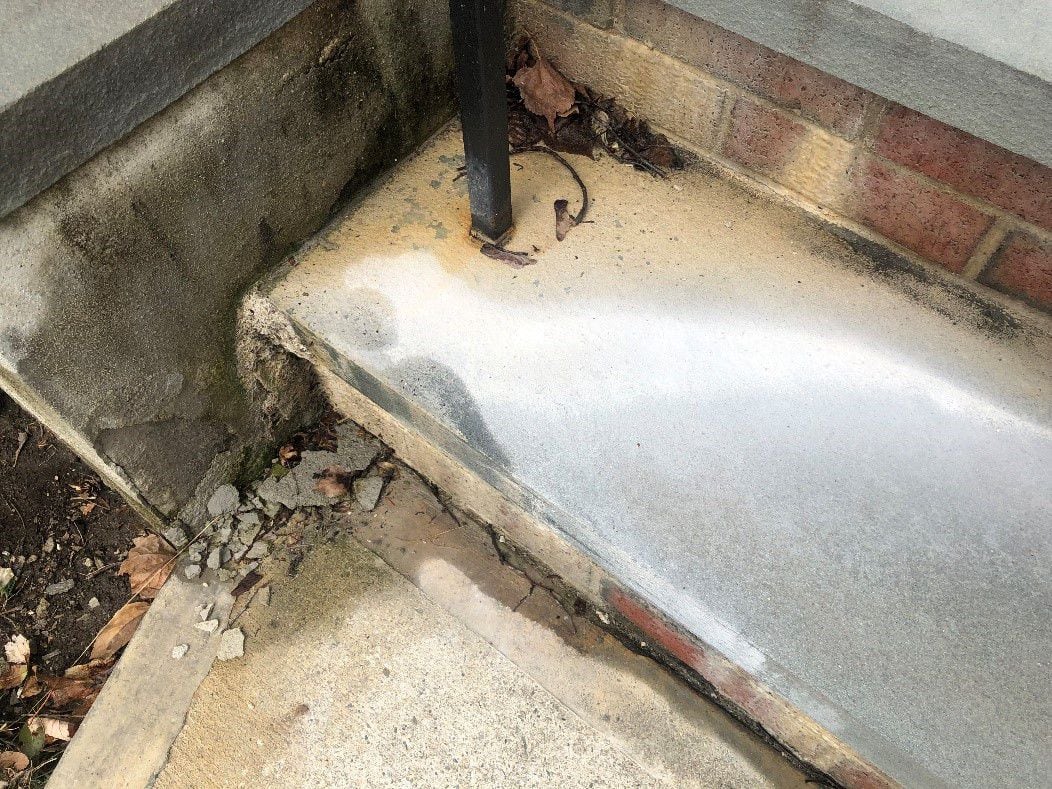Address newsletter
Get the latest news on buying, selling, renting, home design, and more.

Q. We had a popcorn ceiling installed in our kitchen when we moved into our house 30 years ago. The section above the stove accumulates a lot of dust and oil. How can we clean this unsightly section or smooth it? I’ve read that these types of ceilings may contain asbestos, so I am concerned about what kind of dust we would generate scraping it.
SUE
A. There was a time when asbestos could be found in popcorn ceilings (as well as any number of building products, unfortunately) but the cutoff for that is 1980. Similarly, lead is generally found only in homes built before 1978. It’s highly unlikely that the painter used a product that had been sitting on a shelf that long. That said, trying to scrape down popcorn ceilings is a tedious, time-consuming, and dirty job. We have always treated these ceilings like an old plaster one that is coming apart. We do what’s called a “layover,” which is simply to install new half-inch blueboard and plaster right over what you have. With the right crew, this could be done in a day, and then you just need to paint it. This is a permanent solution that will outlast any attempt to retrofit and/or scrape and repair popcorn ceilings. One more note, readers: If you are concerned that you have asbestos in your home, contact a licensed testing company. Just a small amount of the material would be sufficient to have a lab run an analysis. Typically, you get the results back within a couple of days.

Q. We had our front steps replaced in September 2019. By the next year, there were white stains on the bluestone. We tried various web-recommended remedies, with no luck. Then the cement interior side surfaces began to spall. Now, as you can see in the pictures, there’s lots of deterioration. What can we do?
BRUCE AND JUDIE, Belmont
A. This is a tricky one but here goes. The staining and spalling are definitely efflorescence, which occurs when salts force their way out of the masonry products used to build the stairs. I cannot tell what the core of the sides of the stairs are made with, but it’s most likely a concrete pour or concrete blocks. All that has been parged over with a mortar skim coat, and that, I think, is the root of the problem. That parging coat appears to be slowing the natural dissipation of moisture from that very substantial stair structure. The moisture always will find a way out, and I think that route is the joint between the stair tread and the parging coat. And with all that moisture comes the salts that cause the efflorescence and staining. It’s not surprising that it looks like it starts near that joint and spreads inward from there. Bluestone is a very porous stone, and it will draw that moisture inward, spreading the stain. To make matters worse, the masonry near the ground is also wicking up ground water, causing the problem to be worse at the bottom tread. You could try removing the parging on the side of the stairs to allow the concrete structure to breathe a bit. Moisture will seek the easiest way out and go there, a place that may be hidden from view.
As far as removing the staining, you may not be able to do so completely, but you could make it look better. If stone cleaners don’t improve things, slowly work your way up to a diluted muriatic acid wash. Try a test area. You can slowly increase the strength if you’re not having good results. This is a dangerous product, but it is available off the shelf. Talk to someone at the supply house you buy it from and follow the instructions carefully.
Mark Philben is the project development manager at Charlie Allen Renovations in Cambridge. Send your questions to [email protected]. Questions are subject to editing.
Get the latest news on buying, selling, renting, home design, and more.
Stay up to date with everything Boston. Receive the latest news and breaking updates, straight from our newsroom to your inbox.
Conversation
This discussion has ended. Please join elsewhere on Boston.com